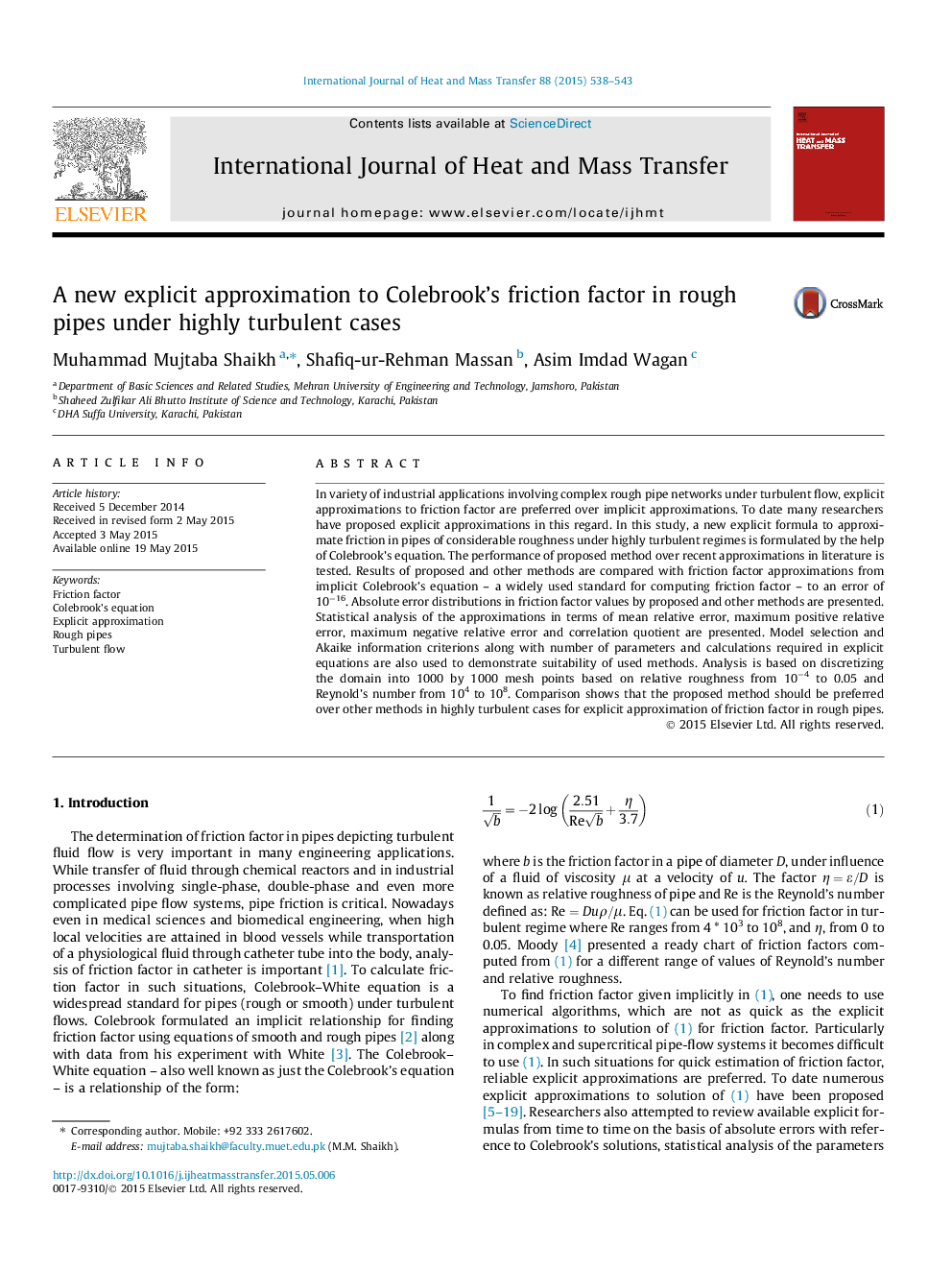| Article ID | Journal | Published Year | Pages | File Type |
|---|---|---|---|---|
| 657046 | International Journal of Heat and Mass Transfer | 2015 | 6 Pages |
Abstract
In variety of industrial applications involving complex rough pipe networks under turbulent flow, explicit approximations to friction factor are preferred over implicit approximations. To date many researchers have proposed explicit approximations in this regard. In this study, a new explicit formula to approximate friction in pipes of considerable roughness under highly turbulent regimes is formulated by the help of Colebrook's equation. The performance of proposed method over recent approximations in literature is tested. Results of proposed and other methods are compared with friction factor approximations from implicit Colebrook's equation - a widely used standard for computing friction factor - to an error of 10â16. Absolute error distributions in friction factor values by proposed and other methods are presented. Statistical analysis of the approximations in terms of mean relative error, maximum positive relative error, maximum negative relative error and correlation quotient are presented. Model selection and Akaike information criterions along with number of parameters and calculations required in explicit equations are also used to demonstrate suitability of used methods. Analysis is based on discretizing the domain into 1000 by 1000 mesh points based on relative roughness from 10â4 to 0.05 and Reynold's number from 104 to 108. Comparison shows that the proposed method should be preferred over other methods in highly turbulent cases for explicit approximation of friction factor in rough pipes.
Keywords
Related Topics
Physical Sciences and Engineering
Chemical Engineering
Fluid Flow and Transfer Processes
Authors
Muhammad Mujtaba Shaikh, Shafiq-ur-Rehman Massan, Asim Imdad Wagan,
